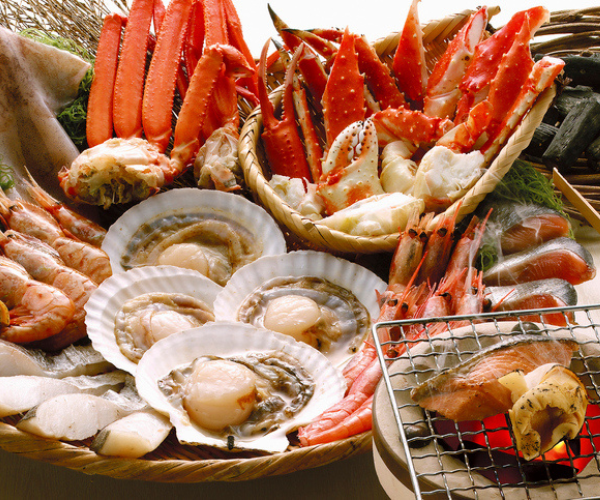Looking to take your grilling skills to the next level?
Look no further than “The Ultimate Guide to BBQ: Mastering the Art of Grilling.”
In this comprehensive guide, we will equip you with all the knowledge and techniques needed to become a BBQ master.
From choosing the right grill and understanding different types of fuel, to mastering the art of grilling temperature control and creating mouthwatering marinades and rubs, this guide has got you covered.
Whether you’re a beginner looking to impress your friends and family with delicious grilled dishes, or an experienced griller wanting to refine your skills, this guide is packed with tips, tricks, and recipes that will elevate your BBQ game.
Get ready to learn the secrets of perfect sear marks, juicy meat, and smoky flavors that will have everyone coming back for seconds. So grab your tongs, fire up the grill, and let’s dive into the world of BBQ mastery.
The History of BBQ
BBQ has a rich and fascinating history that dates back centuries. It is believed to have originated in the Caribbean, where indigenous tribes used a method of slow-cooking meat over an open fire.
This technique eventually made its way to North America, where it became popular among settlers and indigenous peoples alike.
Over time, BBQ evolved and spread across different regions, each with its own unique style and flavor profiles. From the tangy tomato-based sauces of Kansas City to the vinegar-based sauces of the Carolinas, BBQ has become a true American culinary tradition.
Today, BBQ is enjoyed worldwide, with different countries putting their own spin on this beloved cooking method.
The art of BBQ lies in the slow cooking process, which allows the flavors to develop and the meat to become tender and juicy. It’s a labor of love that requires patience and skill, but the end result is well worth the effort.
Whether you’re smoking ribs, grilling steaks, or roasting a whole hog, BBQ is a celebration of good food and good company.
Types of BBQ and Grilling Techniques
When it comes to BBQ, there are several different styles and techniques to choose from.
Each region has its own unique approach, but they all share a common goal: to create delicious, flavorful dishes that are cooked low and slow.
Here are some of the most popular types of BBQ and grilling techniques:
Smoking:
Smoking is a slow-cooking method that involves cooking meat over indirect heat and using wood chips or chunks to create smoke. This imparts a smoky flavor to the meat and results in a tender, juicy texture. Common woods used for smoking include hickory, mesquite, and applewood.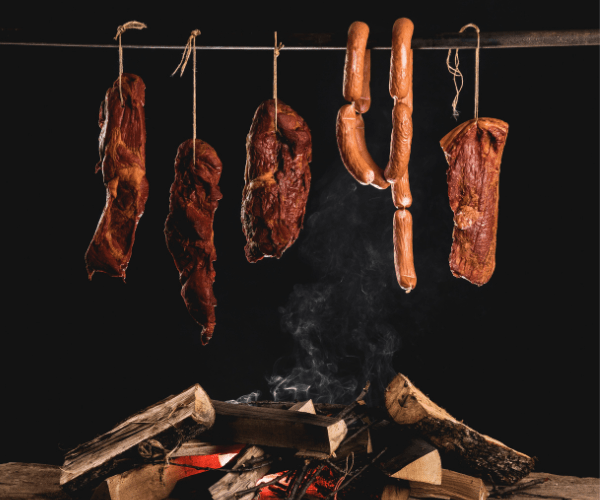
Grilling:
Grilling is a faster cooking method that involves cooking meat directly over high heat. This is perfect for quick-cooking cuts like steaks, burgers, and sausages. Grilling gives a nice charred exterior while keeping the inside juicy and flavorful.
Barbecuing:
Barbecuing is a combination of smoking and grilling. It involves slow-cooking meat over indirect heat for an extended period, then finishing it off over direct heat to develop a caramelized crust. This method is often used for larger cuts of meat like brisket or pork shoulder.
Rotisserie:
Rotisserie cooking involves skewering meat and cooking it slowly over a fire or a grill, while it rotates. This method ensures even cooking and results in a juicy, flavorful end product.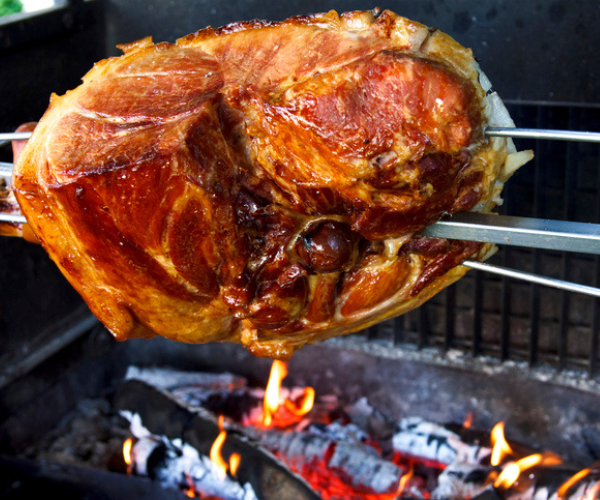
It’s important to experiment with different techniques to find the one that suits your taste preferences and cooking style. Whether you prefer the smoky flavors of traditional BBQ or the quick sear of a grill, there’s a technique out there for you.
Essential Equipment for BBQ
To become a BBQ master, you’ll need the right tools for the job. Here are some essential equipment and accessories that every griller should have:
Grill:
The most important piece of equipment is, of course, the grill itself. There are several types to choose from, including charcoal, gas, electric, and pellet grills. Each has its own advantages and disadvantages, so consider factors like flavor, convenience, and ease of use when making your selection.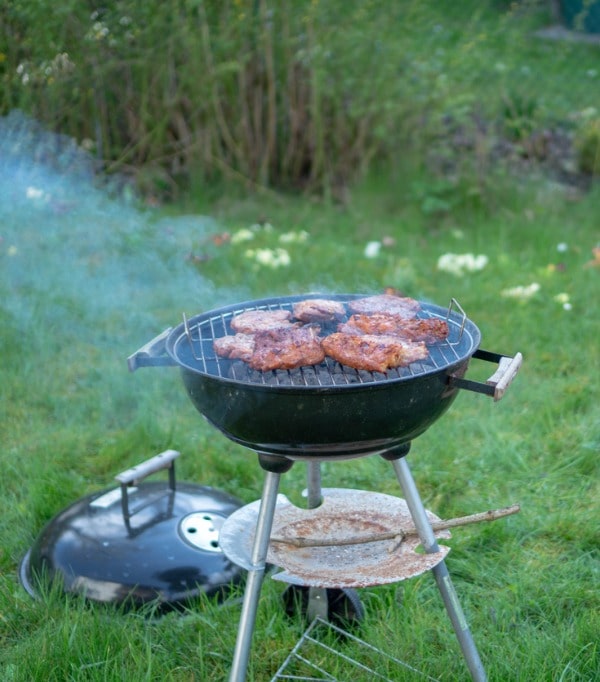
Thermometer:
A reliable thermometer is crucial for achieving perfectly cooked meat. Invest in a good quality instant-read thermometer to ensure accurate temperature readings.
Grill brush:
Keeping your grill clean is essential for maintaining its performance and preventing flare-ups. A sturdy grill brush with brass bristles is ideal for removing charred residue and keeping your grill in top shape.
Tongs and spatula:
Long-handled tongs and a sturdy spatula are essential for flipping, turning, and moving food on the grill. Look for tools with heat-resistant handles and a comfortable grip.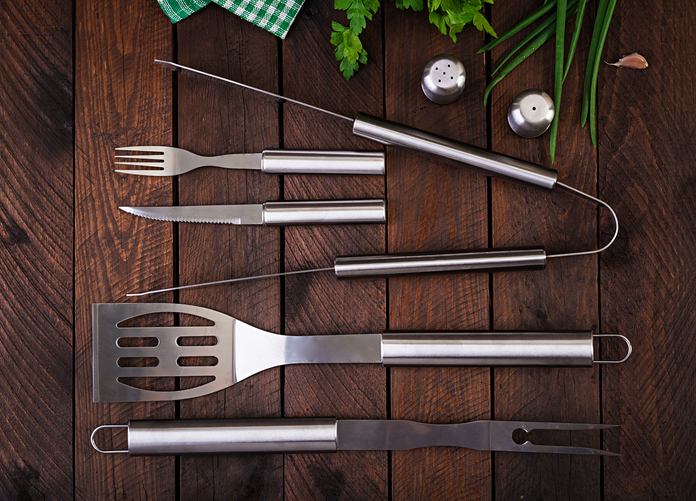
Grill gloves:
Protect your hands from the heat with a pair of heat-resistant grill gloves. These will allow you to handle hot grates, pans, and utensils without worrying about burns.
Grill basket:
A grill basket is perfect for cooking delicate foods like vegetables, seafood, and smaller cuts of meat. It prevents them from falling through the grates and makes flipping and turning a breeze.
Meat injector:
If you want to take your BBQ to the next level, consider investing in a meat injector. This tool allows you to inject marinades and flavorings directly into the meat, resulting in a more flavorful and juicy end product.
Remember, investing in quality equipment will not only enhance your grilling experience but also contribute to better results. Take care of your equipment, and it will serve you well for years to come.
Choosing the Right Meat for the Art of Grilling
When it comes to grilling, choosing the right meat is key to achieving mouthwatering results. Here are some tips for selecting the best cuts:
Steak:
Look for well-marbled cuts like ribeye, striploin, or T-bone steaks. The marbling adds flavor and juiciness to the meat. For the best results, opt for steaks that are at least 1 inch thick to ensure a nice sear on the outside while keeping the inside tender and juicy.
Chicken:
Chicken is a versatile meat that takes well to grilling. Opt for bone-in, skin-on chicken pieces like thighs or drumsticks, as they stay moist and flavorful on the grill. Marinating the chicken beforehand adds extra flavor and helps keep the meat juicy.
Pork:
Pork chops, tenderloin, and ribs are all excellent choices for grilling. Look for cuts with a good amount of fat and marbling, as this adds flavor and prevents the meat from drying out. Pork ribs benefit from the low and slow cooking method, while pork chops and tenderloin can be cooked over direct heat for a shorter time.
Seafood:
Grilling seafood adds a unique smoky flavor that enhances its natural sweetness. Opt for firm-fleshed fish like salmon, tuna, or swordfish, as they hold up well on the grill. Shellfish like shrimp, scallops, and lobster tails are also great options.
Vegetables:
Don’t forget about grilled vegetables! They add color, flavor, and texture to your BBQ spread. Some great options include bell peppers, zucchini, eggplant, corn on the cob, and mushrooms. Coat them in olive oil, season with salt and pepper, and grill until tender.
When shopping for meat, choose cuts that are fresh and of high quality. If possible, visit a local butcher who can offer advice on the best cuts for grilling and provide you with the freshest options.
BBQ Marinades and Rubs for the Art of Grilling
Marinades and rubs are essential for infusing flavor into your grilled dishes. Here are some popular marinades and rubs to try:
Classic BBQ Sauce:
A tangy and slightly sweet sauce made with ketchup, brown sugar, vinegar, and spices. Brush it onto your meat during the last few minutes of grilling for a sticky glaze.
Dry Rub:
A mixture of spices, herbs, and seasonings that is rubbed onto the meat before grilling. Common ingredients include paprika, chili powder, garlic powder, onion powder, salt, and pepper. Allow the rub to sit on the meat for at least 30 minutes or up to overnight to let the flavors penetrate.
Teriyaki Marinade:
A sweet and savory marinade made with soy sauce, ginger, garlic, and honey. It’s perfect for marinating chicken, beef, or pork before grilling.
Lemon Herb Marinade:
A refreshing marinade made with lemon juice, olive oil, garlic, and a variety of fresh herbs like rosemary, thyme, and parsley. It adds a bright, citrusy flavor to seafood, chicken, and vegetables.
Spicy Cajun Rub:
A bold and flavorful rub made with a combination of spices like cayenne pepper, paprika, garlic powder, onion powder, thyme, and oregano. It’s perfect for adding a kick to chicken, shrimp, or ribs.
When using marinades, be sure to allow enough time for the flavors to penetrate the meat. For thinner cuts, 30 minutes to an hour is usually sufficient, while thicker cuts can benefit from marinating overnight in the refrigerator. With rubs, apply them generously to ensure even coverage and maximum flavor.
Grilling Tips and Tricks
Art of Grilling is both an art and a science. To help you become a BBQ master, here are some tips and tricks to keep in mind:
Preheat the grill:
Preheating the grill is essential for achieving those beautiful sear marks and preventing food from sticking. Allow the grill to preheat for at least 10-15 minutes before cooking.
Oil the grates:
To prevent food from sticking, brush the grates with oil before adding the meat. Use a high-heat oil like canola or vegetable oil and a folded paper towel or silicone brush to apply a thin, even layer.
Create heat zones:
If your grill has multiple burners, create different heat zones by turning some burners to high heat and others to medium or low heat. This allows you to sear the meat over high heat and then move it to a lower heat zone to finish cooking.
Use the lid:
Keep the lid closed as much as possible during cooking to maintain a consistent temperature and prevent flare-ups. However, be sure to monitor the food closely to prevent it from burning.
Let meat rest:
After cooking, allow the meat to rest for a few minutes before serving. This allows the juices to redistribute and ensures a more tender and flavorful end product.
Experiment with flavors:
Don’t be afraid to get creative with flavors. Try different marinades, rubs, and wood chips to add unique flavors to your art of grilling techniques. Mix and match ingredients to create your own signature BBQ style.
Practice food safety:
Always practice proper food safety when grilling. Keep raw meat separate from other ingredients, wash your hands frequently, and use separate utensils and cutting boards for raw and cooked foods.
With time and practice, you’ll develop your own grilling style and techniques. Don’t be discouraged by a few mishaps along the way.
Remember, BBQ is all about having fun, experimenting, and enjoying delicious food with loved ones.
Popular BBQ Recipes
Now that you have the knowledge and techniques needed to become a BBQ master, let’s dive into some popular BBQ recipes to get you started:
Classic Smoked Ribs:
Tender baby back ribs coated in a smoky dry rub and slow-cooked until they fall off the bone.
Perfectly Grilled Steak:
A juicy ribeye steak seasoned with salt and pepper and cooked to perfection over high heat.
Beer Can Chicken:
A whole chicken infused with flavor from a beer can and cooked on the grill until it’s crispy on the outside and juicy on the inside.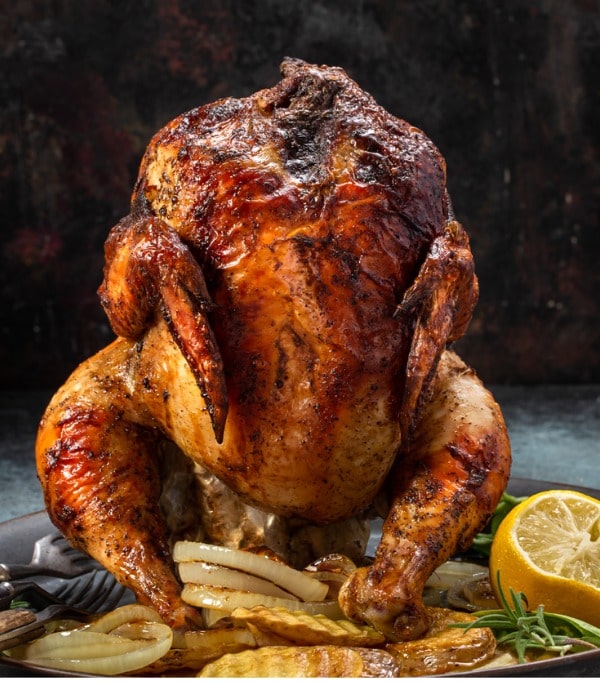
Pulled Pork Sandwiches:
Slow-cooked pork shoulder coated in a tangy BBQ sauce and shredded for mouthwatering sandwiches.
Grilled Shrimp Skewers:
Large shrimp marinated in a lemon garlic marinade and skewered with colorful vegetables before hitting the grill.
Grilled Vegetable Medley:
A colorful mix of grilled vegetables seasoned with olive oil, salt, and pepper. Perfect as a side dish or vegetarian main course.
Remember to adjust cooking times and temperatures based on the specific recipe and your grill’s performance. Don’t be afraid to get creative and add your own twist to these recipes.
Vegetarian and Vegan Options for BBQ
BBQ isn’t just for meat lovers. There are plenty of delicious vegetarian and vegan options that can be grilled to perfection. Here are some ideas to try:
Grilled Portobello Mushrooms:
Large portobello mushrooms marinated in balsamic vinegar, garlic, and herbs, then grilled until tender and juicy. Serve them as a burger alternative or as a main course.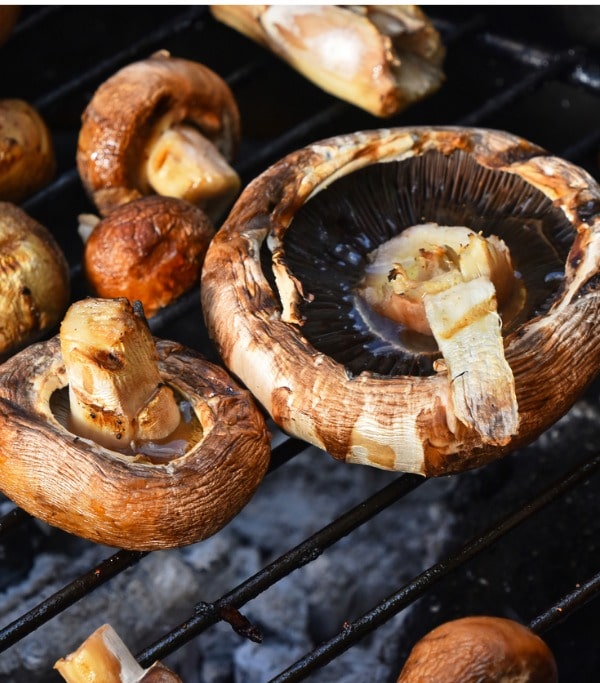
Grilled Veggie Skewers:
Skewer a variety of colorful vegetables like bell peppers, zucchini, cherry tomatoes, and red onions, then grill until charred and tender. Serve them as a side dish or as a main course with a side of quinoa or couscous.
Grilled Tofu:
Tofu is a great plant-based protein that takes well to grilling. Marinate it in your favorite BBQ sauce or a tangy teriyaki marinade before grilling for a flavorful and satisfying dish.
Grilled Corn on the Cob:
Brush ears of corn with olive oil, sprinkle with salt and pepper, and grill until tender and slightly charred. Serve them with a dollop of vegan butter and a sprinkle of fresh herbs.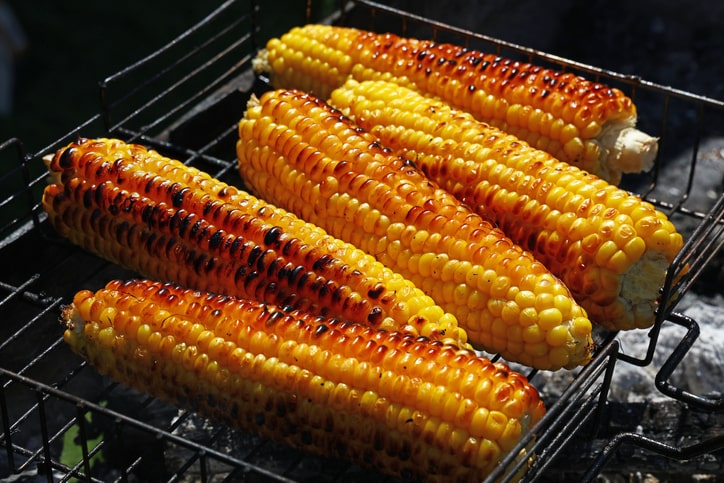
Grilled Pineapple:
Grilling pineapple brings out its natural sweetness and adds a smoky flavor. Serve it as a dessert or as a topping for veggie burgers or tacos.
With these vegetarian and vegan options, everyone can enjoy the flavors and experience of BBQ. Experiment with different ingredients and flavors to create delicious plant-based dishes that are sure to impress.
Frequently Asked Questions
What is the main purpose of “Mastering the Art of Grilling“?
The guide aims to equip readers with the knowledge and techniques needed to master BBQ and grilling, covering everything from the history of BBQ to essential equipment and popular recipes.
Where did BBQ originate?
BBQ is believed to have originated in the Caribbean, where indigenous tribes practiced a method of slow-cooking meat over an open fire.
What are the different types of BBQ and grilling techniques?
The main types include smoking, grilling, barbecuing, and rotisserie cooking.
What is the difference between grilling and barbecuing?
Grilling is a faster method that cooks meat directly over high heat, while barbecuing combines smoking and grilling, involving slow-cooking meat over indirect heat and then finishing it over direct heat.
What are some essential BBQ equipment and accessories?
Essential equipment includes a grill, thermometer, grill brush, tongs, spatula, grill gloves, grill basket, and a meat injector.
How should one choose the right meat for grilling?
It’s important to select fresh, high-quality cuts. For steak, well-marbled cuts like ribeye are ideal. Bone-in, skin-on chicken pieces are great for grilling, and for pork, cuts with good fat and marbling are recommended.
What are marinades and rubs, and why are they important?
Marinades and rubs are mixtures of spices, herbs, and liquids used to infuse flavor into meat before grilling. They enhance the taste and can help tenderize the meat.
Can you provide some popular BBQ recipes?
Some popular recipes include classic smoked ribs, perfectly grilled steak, beer can chicken, pulled pork sandwiches, grilled shrimp skewers, and a grilled vegetable medley.
Are there vegetarian or vegan options for BBQ?
Yes, options include grilled portobello mushrooms, grilled veggie skewers, grilled tofu, grilled corn on the cob, and grilled pineapple.
How can one ensure safety and hygiene while barbecuing?
Regularly clean and maintain your grill, practice proper food safety by keeping raw and cooked foods separate, wash hands frequently, and use separate utensils for raw and cooked foods.
